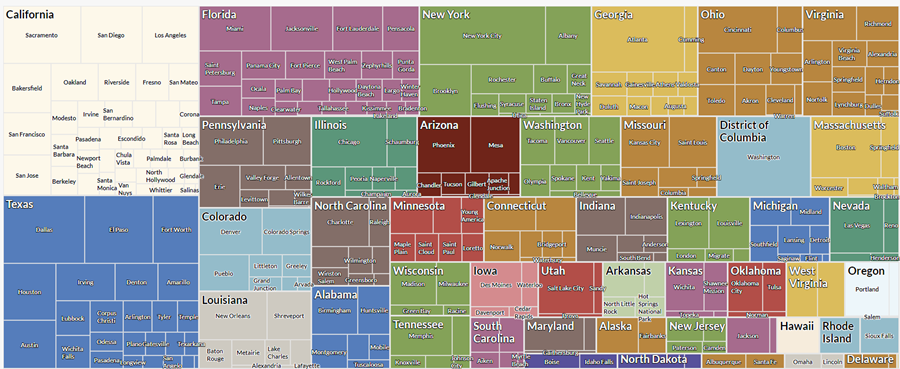

Things to bewareĪ treemap is only valid if the constituent units are legitimately part of the same ‘whole’. It is common to find treemaps as interactive visualisations enabling you to click or hover over the different shapes to bring up more details about the category. Effective labeling becomes difficult as the rectangles get smaller so often only the most prominent values might be labelled. Seek out the largest rectangular values (or the largest collected group of rectangles) and look out for significant colour variations. For easy comparison use the black and purple areas in both charts. Try to interpret the relative importance of various data points in the treemap. It is available in all editions on all devices (including Mobile Phones). You might use a tree map to show the makeup of the top 500 companies on the stock exchange, with each stock displayed as a rectangle sized by its value and coloured by its daily change. Now compare this pie chart with the other chart. hintDepth(), which is described below in the article. Note that the result of using this method will be seen only if we adjust another setting. hintOpacity() method with a value from 0 to 1. Whilst a pie chart might best work with 3 or fewer segments, a treemap works well with many. TreeMap Chart points have fill, hatchfill, border and other usual element have a hint opacity property, which we can set using. Usually, the small rectangles are logically grouped into some further categorical family and are coloured to indicate a key attribute of the data. The size of these sub-category rectangles represents a quantitative value. The arrangement is typically (but not always) a rectangular area divided up into smaller rectangles to represent sub-categories. A treemap is used to show the composition of a whole when there are many components.


 0 kommentar(er)
0 kommentar(er)
